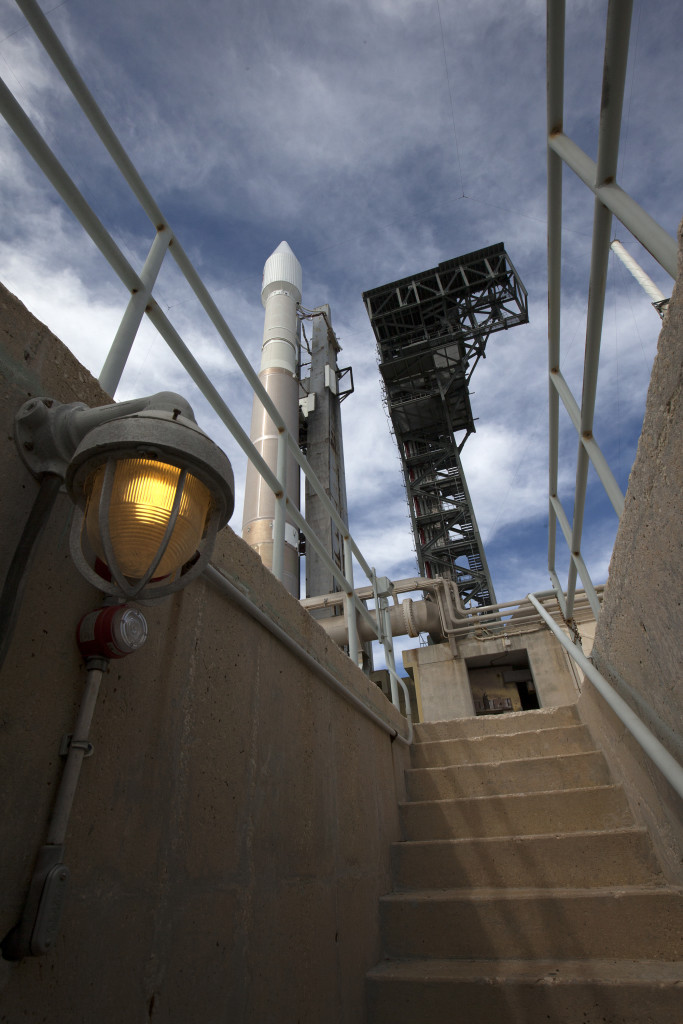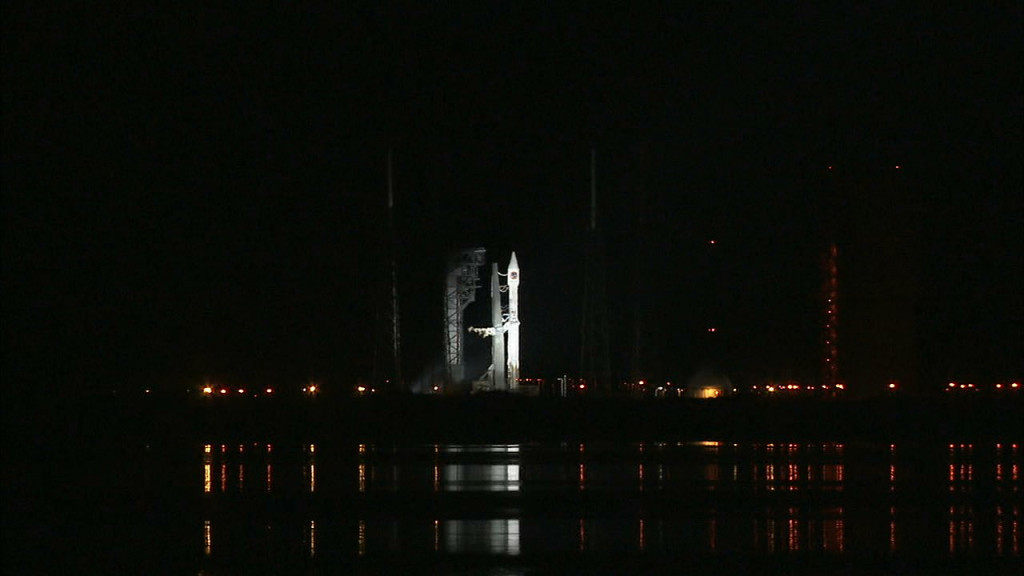The twin solar arrays on the side of Orbital ATK’s Cygnus spacecraft are to deploy shortly as the spacecraft continues to travel through space on its way to the International Space Station.
Category: Cygnus
A Closer Look at the Science of CRS-6
The Orbital ATK Cygnus spacecraft is coasting through space tonight an hour after launch. The two solar arrays on the Cygnus are to unfurl later tonight. Among the 7,500 pounds of experiments, gear and supplies aboard the Cygnus spacecraft now flying to the space station are several research efforts involving different areas of study. For instance, the Strata-1 project, above, will see how the regolith – or soil – on asteroids and other bodies with virtually no gravity behave in space. Another project called Gecko Grippers, shown below, are testing an adhesive method inspired by the microscopic hairs on a gecko’s feet. There is a lot more to both of the projects and others packed inside the Cygnus and you can read about them here.
Launch Replay Now Available
A Flawless Liftoff
Tonight’s launch punctuated a clean countdown for the United Launch Alliance Atlas V rocket and Orbital ATK Cygnus spacecraft. The two solar arrays on the Cygnus will open in about an hour, but right now the spacecraft is exactly where it needs to be and is in position to catch up to the International Space Station for a rendezvous and berthing Saturday morning.
T-4 Minutes and Counting
The final phase of tonight’s countdown is underway at T-4 minutes and counting. We are heading for a liftoff at 11:05 p.m. EDT.
Cygnus Switching to Internal Power
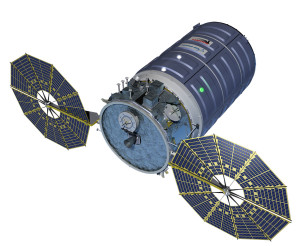 The Cygnus spacecraft at the top of the Atlas V rocket is switching to internal power, the launch team reports. That means it will run on its own batteries for the rest of the countdown and flight into orbit. Once flying on its own, the Cygnus will unfurl a pair of circular solar arrays and begin recharging the batteries using the sun’s energy.
The Cygnus spacecraft at the top of the Atlas V rocket is switching to internal power, the launch team reports. That means it will run on its own batteries for the rest of the countdown and flight into orbit. Once flying on its own, the Cygnus will unfurl a pair of circular solar arrays and begin recharging the batteries using the sun’s energy.
CRS-6: The Video
The CRS-6 mission boasts numerous opportunities for critical research into numerous areas and technologies. With the countdown in a planned hold at T-4 minutes but still on schedule for a 11:05 p.m. EDT liftoff, here is a look at the mission ahead for the Orbital ATK Cygnus spacecraft and United Launch Alliance Atlas V rocket. Photo credit: NASA/Ben Smegelsky
Countdown Enters Planned Hold
At T-4 minutes, the countdown has paused for a planned hold lasting half-an-hour. Everything is on pace for a liftoff at 11:05 p.m. EDT, including the weather and tonight’s tanking process loading fuel and oxidizers into the two stages of the Atlas V rocket. The team will receive the final launch weather forecast from the Air Force’s 45th Space Wing. Then launch teams for NASA, Orbital ATK , and United Launch Alliance will conduct their final polls ahead of the liftoff.
Welcome to Launch Coverage of CRS-6!
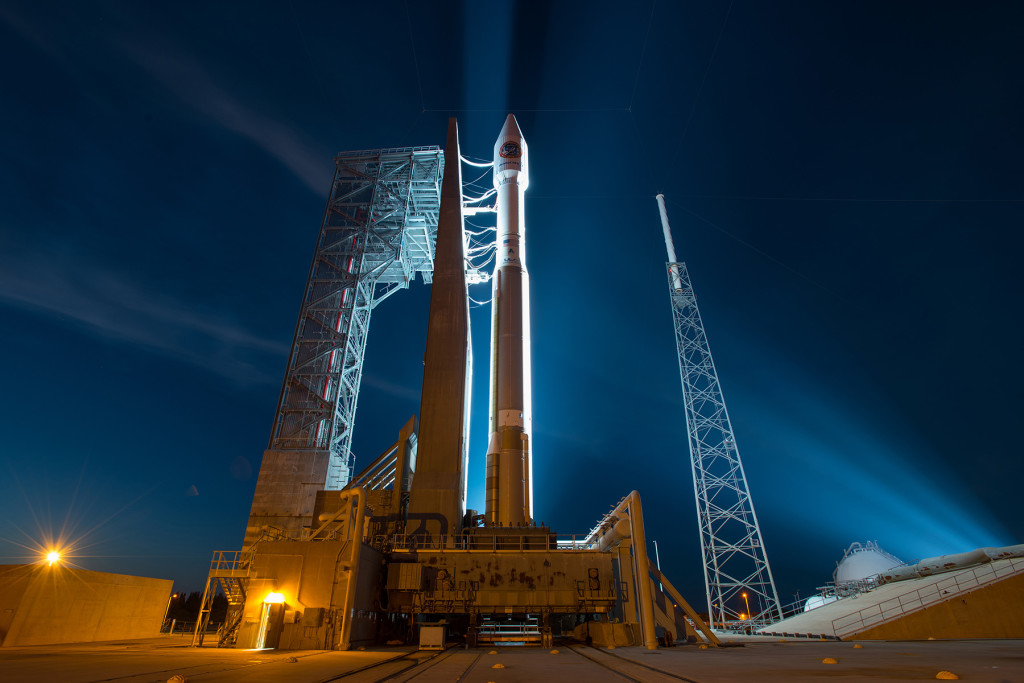 Good evening from Florida’s Space Coast, where an Orbital ATK Cygnus spacecraft is poised to lift some 7,500 pounds of scientific gear and supplies to the International Space Station! Launch is on schedule for 11:05 p.m. EDT, the start of a 30-minute launch window. You can follow along with all the milestones in the countdown here and on NASA TV, which is available online at www.nasa.gov/nasatv.
Good evening from Florida’s Space Coast, where an Orbital ATK Cygnus spacecraft is poised to lift some 7,500 pounds of scientific gear and supplies to the International Space Station! Launch is on schedule for 11:05 p.m. EDT, the start of a 30-minute launch window. You can follow along with all the milestones in the countdown here and on NASA TV, which is available online at www.nasa.gov/nasatv.
Protected inside a payload fairing that will separate a few minutes after launch, the Cygnus stands atop a United Launch Alliance Atlas V rocket at Space Launch Complex 41 at Cape Canaveral Air Force Station adjacent to NASA’s Kennedy Space Center. Dozens of scientific studies will be conducted by the Expedition 47 and 48 crews of the station using the equipment onboard the Cygnus. We’ll detail some of the experiments for you as the night progresses with looks at research focused on fire in space, adhesive technology research and studies of how regolith – or soil – behaves in microgravity.
Here’s a look at some of the countdown milestones tonight as the launch team proceeds toward a liftoff.
10:19 p.m. – Initiate fuel fill sequence
10:31 p.m. – Begin 30 minute hold at T-4 Minutes
10:35 p.m. – Weather Briefing
10:58 p.m. – Status check to continue countdown
11:01 p.m. – Countdown resumes at T-4 Minutes
11:05 p.m. – Launch
Photo credit: ULA
Cryo Tanking Underway for Atlas V
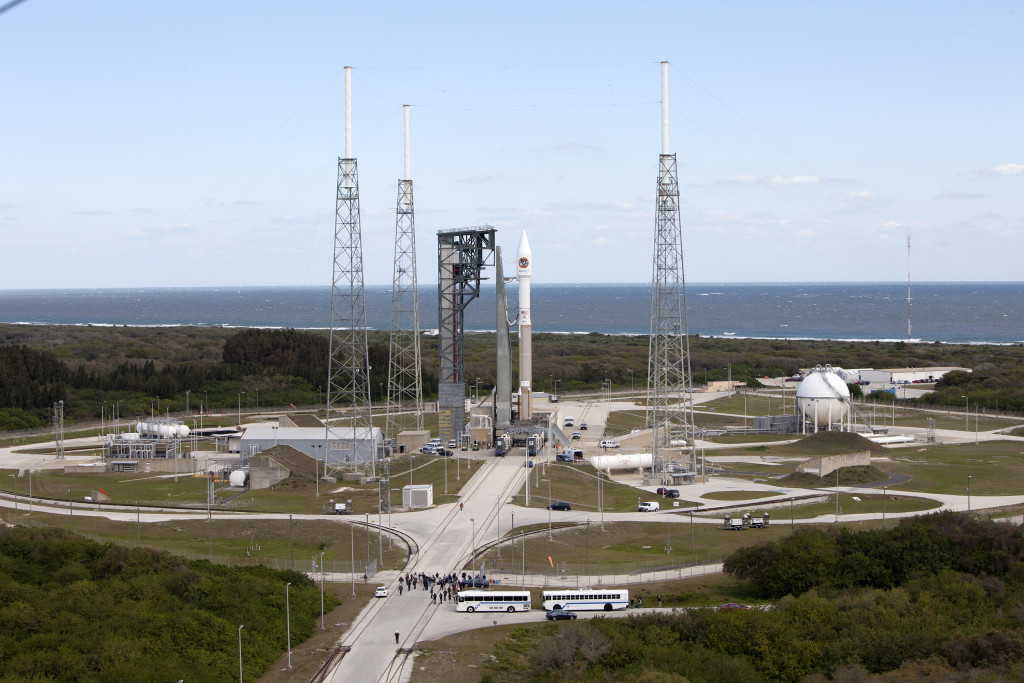 Tonight’s countdown to the launch of Orbital ATK’s CRS-6 mission to the International Space Station is progressing smoothly toward an 11:05 p.m. EDT liftoff. Cryogenic tanking is underway now as the weather forecast remains 90 percent “go.” The Cygnus spacecraft is set to lift off on a United Launch Alliance Atlas V rocket from Space Launch Complex 41 at Cape Canaveral Air Force Station in Florida, carrying nearly 7,500 pounds of supplies and science investigations. Our continuous countdown and launch coverage will beg in at 10 p.m. here and on NASA TV. Photo credit: NASA/Ben Smegelsky
Tonight’s countdown to the launch of Orbital ATK’s CRS-6 mission to the International Space Station is progressing smoothly toward an 11:05 p.m. EDT liftoff. Cryogenic tanking is underway now as the weather forecast remains 90 percent “go.” The Cygnus spacecraft is set to lift off on a United Launch Alliance Atlas V rocket from Space Launch Complex 41 at Cape Canaveral Air Force Station in Florida, carrying nearly 7,500 pounds of supplies and science investigations. Our continuous countdown and launch coverage will beg in at 10 p.m. here and on NASA TV. Photo credit: NASA/Ben Smegelsky




